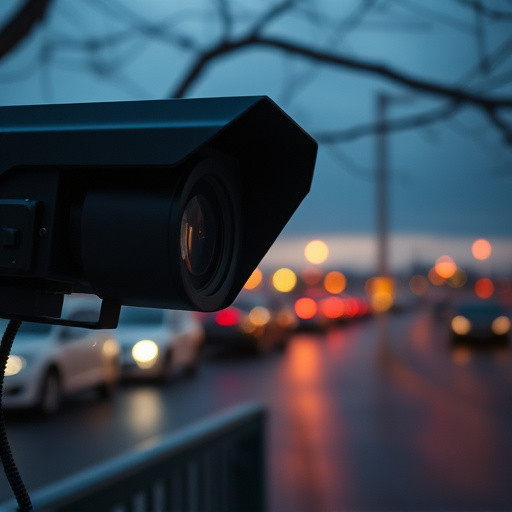Implementing a disguised recording equipment strategy requires understanding local laws on privacy rights and surveillance technology, balancing security needs with individual privacy in indoor environments like homes and offices. Selecting the best system involves evaluating specific surveillance needs, recording quality, and remoteness requirements. Creative deployment through everyday objects like faux power outlets or decorative clocks ensures seamless integration while capturing footage without raising suspicion. Strategic placement of cameras on ceilings, behind frames, or inside objects, with clear lenses and motion-activated features, optimizes performance and maintains discretion.
Uncover the art of strategic hidden camera placement with our comprehensive guide. Explore the intricate balance between legal boundaries and effective surveillance, ensuring your privacy concerns are addressed. We navigate the selection process for the best indoor spy camera system tailored to your unique requirements. Discover creative disguise techniques to seamlessly integrate surveillance equipment into any environment, along with expert installation tips for optimal performance.
- Understanding Legal Considerations and Ethical Boundaries
- Choosing the Right Spy Camera System for Your Needs
- Creative Disguise Techniques for Effective Placement
- Installation Tips to Ensure Optimal Performance
Understanding Legal Considerations and Ethical Boundaries
When implementing a disguised recording equipment strategy, it’s crucial to understand the legal landscape surrounding spy cameras and hidden recording devices. In many jurisdictions, there are strict regulations regarding privacy rights, consent, and the use of surveillance technology. Using a best indoor spy camera system or any recording device requires careful consideration to ensure compliance with local laws. For instance, some areas mandate clear visibility of a ‘camera in use’ sign or require explicit consent from all parties involved.
Navigating ethical boundaries is equally important. Disguising recording equipment as everyday objects can create an atmosphere of distrust and invade personal spaces. It’s essential to consider the purpose behind implementing such a system, ensuring it aligns with legal requirements and respects individual privacy. This balance between security needs and privacy rights forms the ethical framework for deploying disguised recording devices, be it for home, office, or other indoor environments.
Choosing the Right Spy Camera System for Your Needs
Selecting the ideal spy camera system is a crucial step in designing an effective concealed surveillance strategy. The market offers a diverse range of options, from compact and discreet models to advanced systems with numerous features. When choosing your best indoor spy camera system, consider your specific requirements and intended use.
For instance, if you need a comprehensive solution for monitoring multiple rooms or areas, opt for a system with a network of connected cameras and a central control unit. These systems allow for remote access and real-time monitoring, making them ideal for homes, offices, or businesses. Alternatively, single, high-definition spy cameras might be more suitable for targeted observation in smaller spaces. Ensure the chosen system aligns with your privacy needs, recording quality demands, and desired level of remoteness for control and viewing.
Creative Disguise Techniques for Effective Placement
When it comes to discreetly placing recording equipment, creativity is key. The best indoor spy camera system should blend seamlessly into its surroundings to avoid detection. One effective technique is to utilize everyday objects as a disguise. For instance, placing a small camera inside a faux power outlet or a decorative wall clock can be an ingenious way to capture footage without raising suspicion. These seemingly innocuous items serve as perfect cover, making it easier to position the device in hard-to-reach or high-traffic areas.
Another strategic approach is to incorporate the equipment into furniture or home decor. A hidden camera integrated into a bookshelf, table, or even a piece of art can go unnoticed by most. By choosing items with various sizes and shapes, you can adapt these disguises to different settings, making it challenging for individuals to identify the true purpose of each object. This clever placement ensures that your best indoor spy camera system operates effectively while maintaining an air of normalcy.
Installation Tips to Ensure Optimal Performance
When setting up a best indoor spy camera system, careful consideration of placement is key to achieving optimal performance and capturing clear, detailed footage. Positioning cameras in strategic locations can ensure comprehensive coverage of areas of interest while minimizing the risk of detection. Avoid obvious spots like directly above doors or close to windows; instead, think creatively by mounting cameras on ceilings, behind frames, or inside everyday objects like clocks or smoke detectors for a more discreet setup.
To maximize video quality, ensure each camera has a clear view free from obstructions. Keep lenses clean and unobscured for crisp visuals. Additionally, take advantage of motion-activated features to conserve battery life and storage space by only recording when activity is detected. Regular testing and adjustments will help fine-tune your system’s performance, ensuring it captures the intended activities without drawing unnecessary attention.
Disguising recording equipment requires a balance between creativity, legal compliance, and optimal performance. By understanding the ethical boundaries and choosing the right spy camera system tailored to your needs, you can effectively employ creative placement techniques. Following best practices for installation ensures these discreet devices capture reliable footage while remaining legally sound. When selecting a Best Indoor Spy Camera System, consider features that enhance discretion, image quality, and remote access for versatile monitoring.
